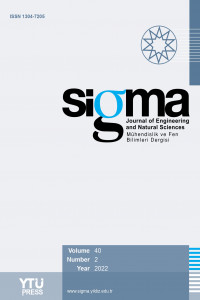Abstract
The Precise Point Positioning (PPP) technique has become an alternative to relative point positioning techniques in the evaluation of Global Navigation Satellite System (GNSS) data because of its less labor and cost-effectiveness. However, there are many parameters (integer ambiguity resolution, satellite geometry, filter type, atmospheric delays, satellite clock offsets and frequency types) to consider in kinematic PPP and these can have different effects on different platforms. Th is study, therefore, investigated the effects of var ious parameters on the accuracy and convergence time of kinematic PPP in different platforms. 3-hour GNSS data, acquired simultaneously from two different receivers (mounted on static and moving platforms), were evaluated using the Kinematic PPP method with different processing parameters in the following four scenarios: satellite combination and geometry, tropospheric model and clock product, all of which have effective roles to play in kinematic PPP processing. The results show that the effect of these parameters in terms of positioning accuracy were, in descending order, strongest for: satellite combination, satellite geometry, troposphere correction, and clock product scenarios. Notably, in the satellite combination scenarios, some parameters have negative effects of up to meter level in the moving receiver compared with the static receiver.
References
- The article references can be accessed from the .pdf file.
Details
| Primary Language | English |
|---|---|
| Subjects | Engineering |
| Journal Section | Research Articles |
| Authors | |
| Publication Date | June 6, 2022 |
| Submission Date | September 10, 2020 |
| Published in Issue | Year 2022 Volume: 40 Issue: 2 |
IMPORTANT NOTE: JOURNAL SUBMISSION LINK https://eds.yildiz.edu.tr/sigma/


